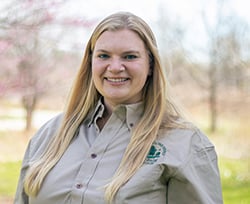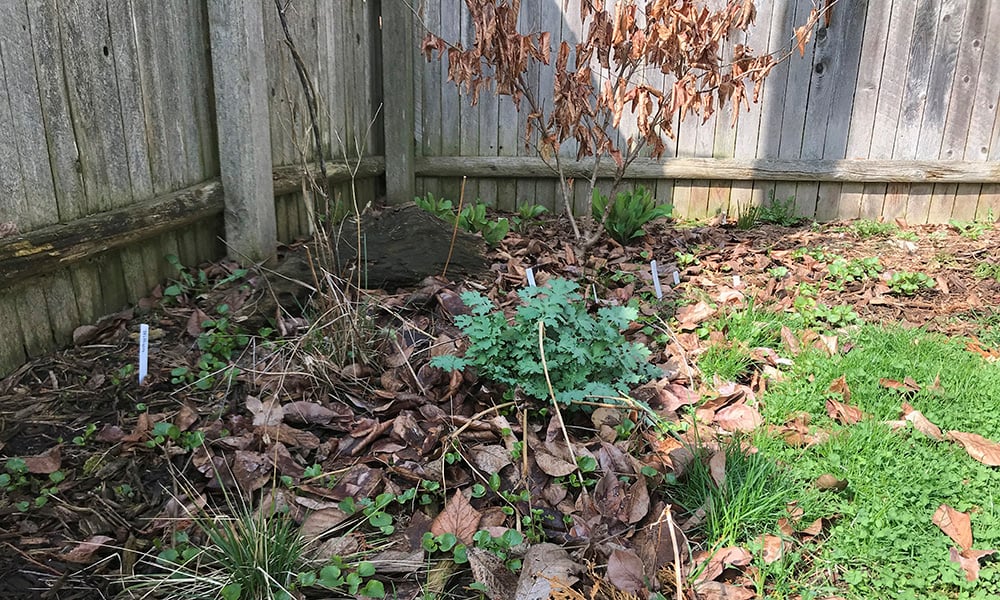
With the recent warm weather and native plants starting to emerge from their winter slumber, folks may be eager to do some spring cleaning in their gardens.
For the sake of pollinators and insects, though, it’s best to hold off until the weather is steadily in the 50's during the day. Many beneficial insects and pollinators overwinter in garden debris. Luna moths, mourning cloak butterflies and native bees, to name a few, rely on things in your garden that some might consider unsightly, like dead leaves and plants.
Here are some tips on spring cleaning for insects and pollinators.
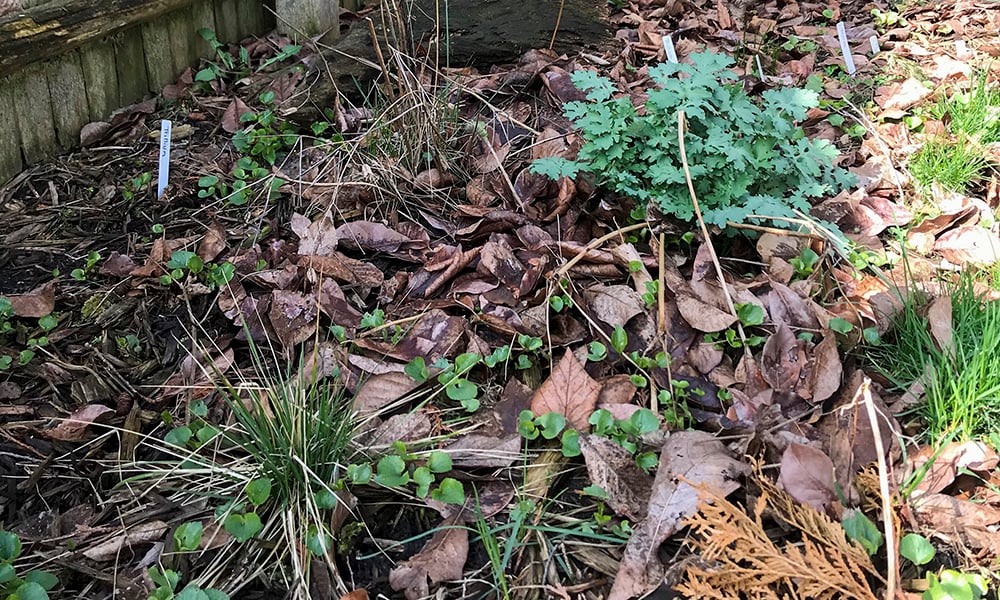
Leaf Litter
It's OK to leave the leaves! Although it's called leaf “litter,” leaves are actually an important part of a healthy garden. Leaving your leaves in the garden allows them to decompose into healthy mulch for your soil.
In addition, many spring wildflowers need a good layer of leaf litter to emerge. If you still want to remove dead leaves from your garden or yard, wait until temperatures are consistently in the 50's to give insects in your garden a chance to wake up and emerge for the spring. Another option is mulching the leaves with your lawn mower and then blowing them back into your garden beds to decompose and provide nutrients for your garden.
Soil
It's not a bad idea to leave some bare soil spots in your garden. Bare soil is important for ground-dwelling insects as well as bumblebees and hummingbird moths.
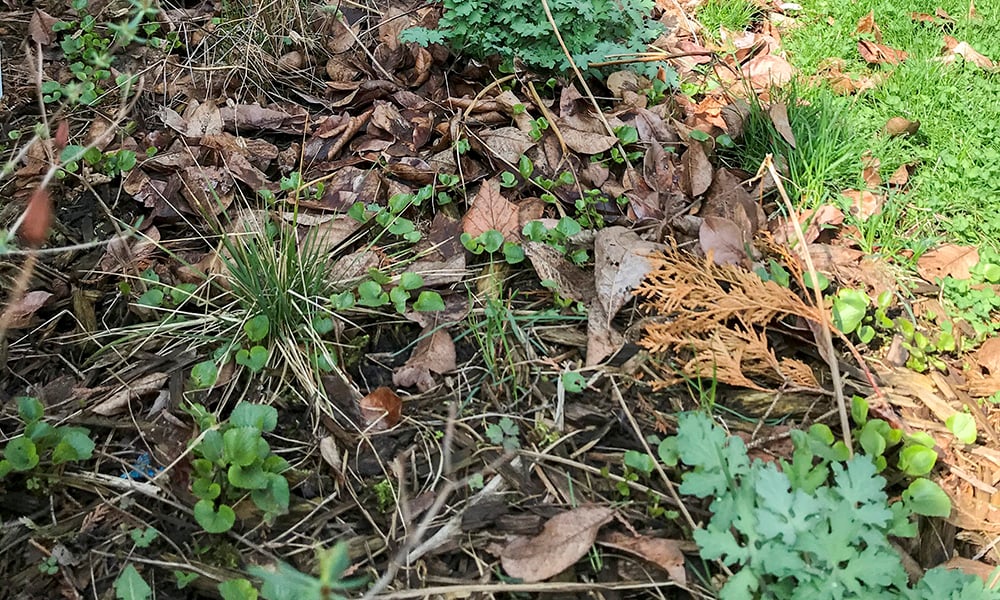
Stems
Later this month, when temperatures stay consistently above 50 degrees, trim stems of last year’s plants to 15 inches long. Leave those stems standing to allow native bees to emerge and use next winter.
Once the new growth begins, you won't even see the stems you left standing. Chop and drop is a good method to use when trimming stems. Simply cut up the removed stems and leave them in your garden bed to decompose and turn into nutrients for the soil.
Pruning Shrubs
Prune your shrubs carefully and look for any cocoons or chrysalises that may be attached. Leave any branches that have these insects attached until they emerge. They can always be trimmed later in the season.
Also watch out for bird nests that may be in or under your shrubs before pruning. If it's a new nest, it is best to leave the area alone for a few weeks until the eggs have hatched and babies have fledged.
If you find a nest from last year, you can throw it in your compost or leave it in your garden to decompose. If you're not sure if there are birds nesting in your garden already, sit quietly outside for a period of time. Birds that are building or tending to a nest will visit the same spot multiple times in an hour. A very noisy bird in a particular spot is another signal you may have bird tenants who are unhappy with your presence.
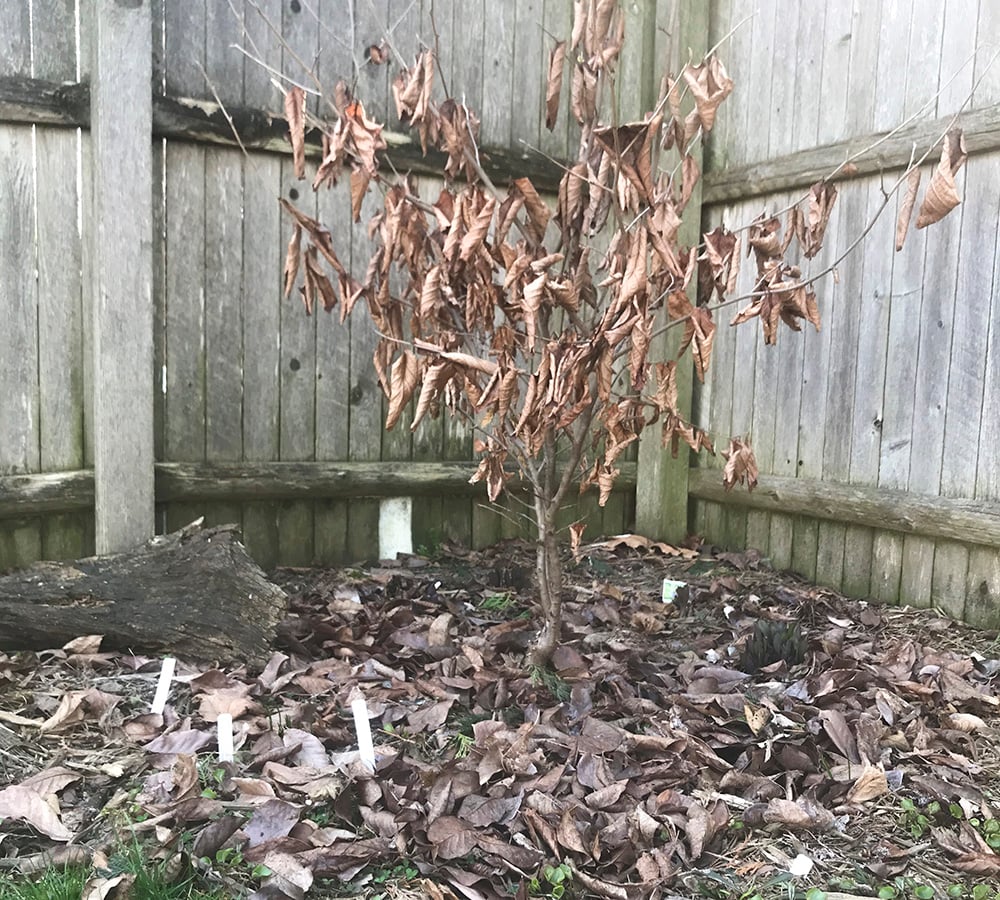
To mulch or not to mulch?
When planting a new garden bed or area, I recommend initially using some mulch to help hold the weeds back. After a garden is established, I use the leaves and stems from my yard on garden beds as a mulch by throwing them on top and supplementing it with wood chip mulch, if needed.
If your garden bed is bare and in desperate need of a mulch cover, wait until temps are above 50 degrees and the soils dry out a little bit to give insects that overwintered as eggs, pupae or adults a chance to emerge from the soil.
If you mulch, it doesn’t need to be more than 2 - 3 inches deep. An alternative to mulching is creating more tighter plantings to help keep weeds at bay.
Each yard and garden has its own unique situation, so feel free to tailor these tips to suit your needs. Over time, these steps may save you time and money over a traditional spring cleanup, and local wildlife will most definitely benefit.
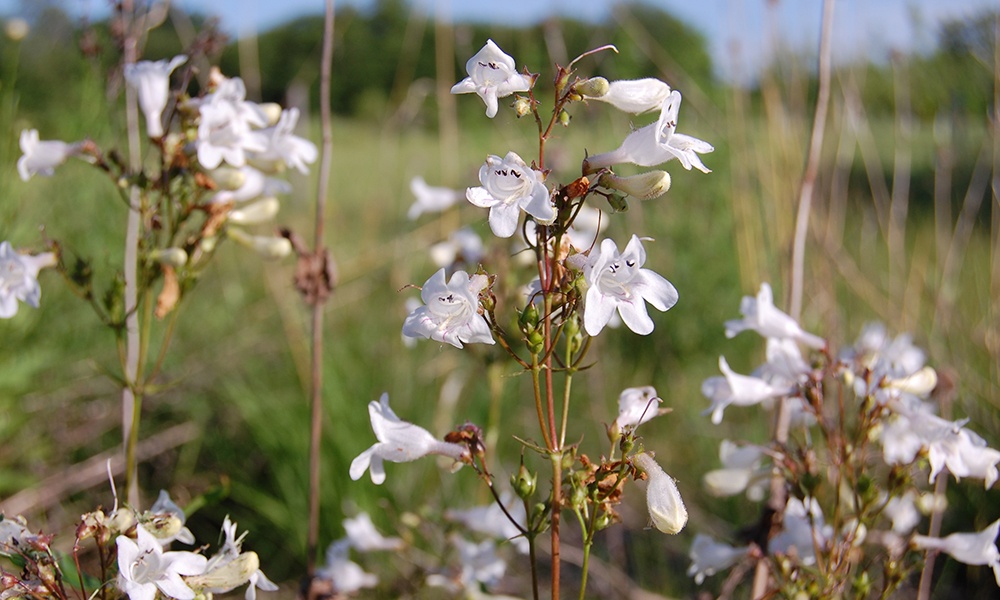
Keriann Dubina
